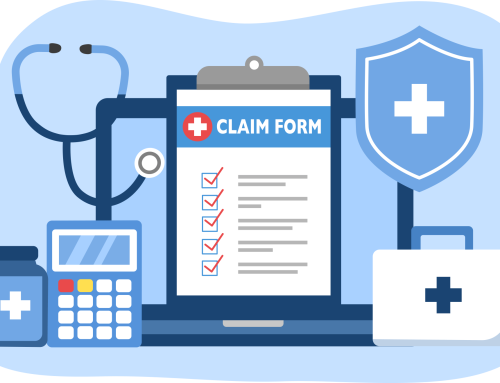|
A Letter of Medical Necessity (LMN) is a pivotal document that delineates the rationale for specific medical treatments or services. These letters are instrumental in ensuring patients receive necessary care, particularly regarding insurance coverage. This comprehensive guide will explore the essentials of composing a compelling LMN, including its definition, situations requiring its use, and best practices for crafting an impactful letter.
What is a Letter of Medical Necessity (LMN)?
A Letter of Medical Necessity is a document authored by a healthcare provider that elucidates why a particular treatment, service, or equipment is medically indispensable for a patient. It offers detailed insights into the patient’s condition, the recommended treatment, and why alternative options are unsuitable. LMNs are often mandated by insurance companies to determine coverage for requested medical services.
Situations Necessitating a LMN
Several scenarios necessitate the provision of a Letter of Medical Necessity:
- Insurance Coverage: Insurers frequently require an LMN to approve coverage for specific treatments, services, or equipment.
- Appeals: If an insurance claim is denied, including an LMN as part of an appeal can bolster the case.
- Health Savings Accounts (HSAs) or Flexible Spending Accounts (FSAs): LMNs may be requisite to utilize funds from these accounts for certain medical expenses.
Can a therapist write a LMN?
Yes, therapists can draft Letters of Medical Necessity, particularly when recommending specific therapies or treatments for their patients. Therapists should incorporate relevant details about the patient’s condition and the therapeutic interventions they are proposing.
What Are Medical Necessity Criteria?
Medical necessity criteria are guidelines used by healthcare payers, such as insurance companies or government programs like Medicare, to determine whether a particular medical treatment, procedure, test, or service is necessary for a patient’s care. These criteria are based on clinical evidence and expert opinion and are used to ensure that healthcare resources are used efficiently and appropriately.
Medical necessity criteria help payers make decisions about coverage and reimbursement. They take into account factors such as the patient’s diagnosis, symptoms, medical history, and the expected outcomes of the treatment. Criteria can vary depending on the type of service or treatment being considered and the specific payer’s policies.
Examples of Medical Necessity Criteria
Providers must often demonstrate that a service meets the payer’s medical necessity criteria to receive reimbursement. This may involve submitting documentation such as medical records, test results, and a witten explanation of why the service is necessary for the patient’s care.
Here are just a few examples of medical necessity criteria that are used by most providers and payers to decide medical necessity of a procedure or medical device:
- Documentation of Diagnosis: This criterion requires that the patient’s diagnosis is accurately documented and that the proposed treatment or service is directly related to the diagnosed condition.
- Failure of Conservative Measures: Payers often require evidence that less invasive or less costly treatments have been attempted and have failed before approving more intensive or expensive treatments.
- Clinical Guidelines: Following established clinical guidelines or protocols for specific conditions or treatments is often a requirement for medical necessity.
- Prognosis and Expected Outcomes: Payers may require documentation that the proposed treatment or service is likely to improve the patient’s condition or prevent deterioration.
- Duration and Frequency: Criteria may specify the appropriate duration and frequency of a treatment or service based on the patient’s condition and established standards of care.
- Peer Review: Some payers require a peer review process, where a panel of healthcare professionals evaluates the medical necessity of a proposed treatment or service based on the patient’s medical records and other relevant information.
Step-by-Step Guide: How to Write a Medical Necessity Letter
Important Disclaimer: This guide provides general information on writing a Letter of Medical Necessity (LMN) and should not be considered legal or medical advice. Individual circumstances may vary, and readers are encouraged to consult with healthcare professionals and refer to insurance provider guidelines for specific requirements.
Here are the steps you should take to write a medical necessity letter:
- Patient Information: Commence by including the patient’s name, date of birth, and insurance details.
- Provider Information: Include your name, credentials, and contact particulars.
- Patient’s Diagnosis: Clearly state the patient’s diagnosis or condition necessitating the recommended treatment.
- Recommended Treatment/Service: Describe the treatment, service, or equipment being recommended and why it is necessary.
- Supporting Information: Provide any pertinent clinical evidence, such as test results or medical records, to bolster your recommendation.
- Alternative Treatments: Explain why alternative treatments are inadequate or ineffective for the patient.
- Conclusion: Summarize why the recommended treatment is medically necessary and how it will benefit the patient.
Medical Necessity Letter Best Practices
There are several best practices you and your team should keep in mind when preparing medical necessity letters, including:
- Be Clear and Concise: Utilize plain language and avoid technical jargon to ensure easy comprehension.
- Provide Evidence: Substantiate your recommendation with clinical evidence and research.
- Be Specific: Include details about the patient’s condition and why the recommended treatment is the most suitable.
- Follow the Insurance Company’s Guidelines: Some insurers have specific requirements for LMNs, so adhere to their guidelines.
- Review and Edit: Prior to submission, carefully review the letter to ensure accuracy and completeness.
Medical Necessity Letter Templates
While there is no universal template for an LMN, here is a basic outline to serve as a guide:
Template 1:
[Patient Name]
[Patient Date of Birth]
[Insurance Information]
[Provider Name]
[Provider Credentials]
[Provider Contact Information]
Dear [Insurance Company],
I am writing to request coverage for [Recommended Treatment/Service] for [Patient Name]. [Patient Name] has been diagnosed with [Patient’s Diagnosis], and I believe that [Recommended Treatment/Service] is medically necessary for their condition. [Provide details about the recommended treatment/service and why it is necessary]. [Include supporting information, if applicable]. [Explain why alternative treatments are not suitable].
I have attached [relevant clinical evidence] to support my recommendation. I believe that [Recommended Treatment/Service] is the best course of action for [Patient Name]’s condition, and it will greatly benefit their health and well-being.
Thank you for your attention to this matter. Please let me know if you require any additional information.
Sincerely,
[Provider Name]
Template 2: Letter of Medical Necessity for Durable Medical Equipment (DME)
[Patient Name]
[Patient Date of Birth]
[Insurance Information]
[Provider Name]
[Provider Credentials]
[Provider Contact Information]
Dear [Insurance Company],
I am writing to request coverage for [Name of Durable Medical Equipment (DME)] for [Patient Name]. [Patient Name] has been diagnosed with [Patient’s Diagnosis], and I believe that [Name of DME] is medically necessary for their condition. [Provide details about the recommended DME and why it is necessary]. [Include supporting information, if applicable]. [Explain why alternative options are not suitable].
I have attached [relevant clinical evidence] to support my recommendation. I believe that [Name of DME] is essential for [Patient Name]’s condition and will greatly improve their quality of life and overall health.
Thank you for considering this request. Please let me know if you require any additional information.
Sincerely,
[Provider Name]
Template 3: Letter of Medical Necessity for Therapy Services
Therapy services and therapists often need to write LMNS in the course of their practices and when looking to obtain reimbursement. Here is our third LMN letter template:
[Patient Name]
[Patient Date of Birth]
[Insurance Information]
[Provider Name]
[Provider Credentials]
[Provider Contact Information]
Dear [Insurance Company],
I am writing to request coverage for [Type of Therapy Services] for [Patient Name]. [Patient Name] has been diagnosed with [Patient’s Diagnosis], and I believe that [Type of Therapy Services] are medically necessary for their condition. [Provide details about the recommended therapy services and why they are necessary]. [Include supporting information, if applicable]. [Explain why alternative options are not suitable].
I have attached [relevant clinical evidence] to support my recommendation. I believe that [Type of Therapy Services] will significantly benefit [Patient Name]’s health and well-being.
Thank you for your consideration. Please let me know if you need any further information.
Sincerely,
[Provider Name]
Mastering the Art of Writing a Acceptable Letter of Medical Necessity
Composing a Letter of Medical Necessity demands meticulous attention and a clear understanding of the patient’s condition and treatment requirements. By adhering to these guidelines and best practices, you can craft a compelling LMN that effectively communicates the medical necessity of the recommended treatment or service.
Learn More About How BHM Can Help You Streamline Your Medical Review Process






Leave A Comment